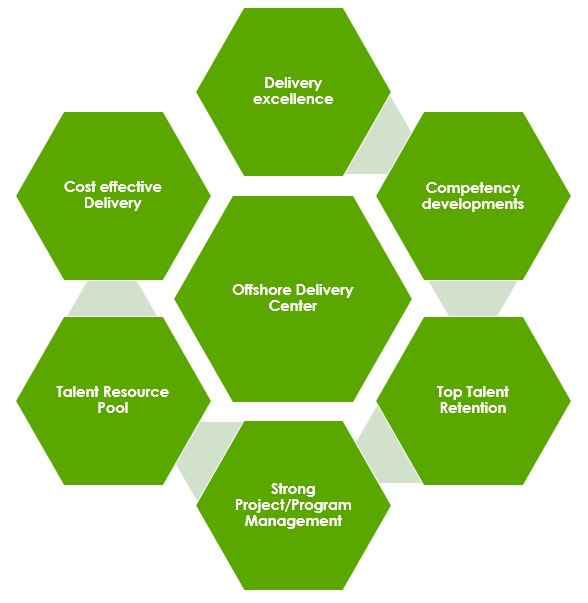Abstract
This paper introduces the Unique Test Management Methodology used for SAP Projects which are delivered in the form of hybrid Model from India. As per the current situation the cost of the IT Budget for every company is growing and it is becoming a burden to the industries, so everyone is looking for cost-effective IT Solutions for their industries. In the Project Life cycle, one of the Phase where we can do the cost optimization is Testing Phase.
Introduction -
In the Project Management Life Cycle there are Multiple Phases where we can do Cost Optimization, But Major Part of the Cost Optimization can be done in the development and Testing Phases. This is because the Major Resources are deployed in the development and Testing for development and Testing. So, there is lot of Scope for Resource Optimization in allocating the Tasks effectively. We can reduce the cost with effective defective Removal efficiency. If the More defective Removal efficiency and you can do more cost optimization.
Software Testing Methodology -
Software Testing methodologies are the approaches and strategies used for testing a Precise product to make sure it fits the customer Proposed Requirements. Software testing methodologies are the various strategies or approaches used to test an application to ensure it behaves and looks as expected. These encompass everything from front to back-end testing, including unit and system testing.
Types of Testing Used in the SAP Implementations-
Project Management has been with us for many years. Over those years, it has changed and adapted to fulfill the demands of Product and services that deliver customer value. In the Project Management Life Cycle Appropriate Testing Methodology should be adopted based on the nature of the project.
Generally, in SAP Implementations there are few Testing types used to do the testing. SAP Implementations are ERP Projects which are for Process automation. Generally, we adopt Unit Testing, Functional Testing, User Acceptance Testing and Integration Testing.
In SAP Implementations, Categorize the Testing into Functional Testing and Non-functional Testing. As mentioned above the functional Testing are Unit Testing, System Integration Testing and User Acceptance Testing., Sometimes we Nonfunctional Testing like Performance Testing based on the Requirements it will be suggested to the team.
Functional Testing –
Unit Testing – In the development life cycle, the configurator or developer will perform the Unit Testin to make sure that the Configuration or the development is done by the consultant is as per the requirements.
System integration Testing – This type of Testing is Used the functionality Testing within the Module or in between the modules will be tested to check the Integrations or the functionality works fine as per the customer requirements. This Testing is done by the Functional Consultants who are designated for the Respective Modules in SAP. This testing also helps to test the seamless integration of Module to Module.
User Acceptance Testing – User Acceptance Testing is the final Testing by the User departments. The Test Cases by the User departments with the help of SAP Module Consultants and they will do Rigorous Testing to check the functionality of the Module or Sub Module as per the customer Requirements. This is the Final Testing and Sign off or agreement with the User departments and Functional Consultants to move the Requirements to the Production.
Non-Functional Testing –
One of the Testing which is frequently used in the SAP Projects is Performance Testing. This Testing will be done for Specific and Complex Requirements where Performance Testing is required to make Sure that the Programs which are going to Production Should not be bounced.
The Performance Testing will be done in the Quality Environment because the data cloning will be done from the Production when we setup the Quality Environment to have same data of Production in Quality Server. This is because if we setup the Same environment of Production in Quality, We can Testing the Programs/Functionality in the Quality Server with the Production data. In this environment we can Test the functionality as well as Performance of the Programs and it will reduce the Production bugs and Performance issues easily.
So in the Quality Server we as Project Managers will look for More defective Removal efficiency in the Quality Server to minimize the Production Impact.
Test Automation –
For Test automation I have written an article which is Prototypes when I was working in HP with HP Quality Center, HP QTP and with eCat SAP Scripts. And also published an article on this in my blog. Now those Test Automation Tools are released by SAP officially to the Customers.
The officially Released SAP Testing Tool is SAP TAO which stands for SAP Test Automation and Optimization. SAP TAO Automates the generation of Test components for end-to-end scenarios.
Tips –
All the Project Managers should make sure that don’t neglect the testing Phase; this is most crucial for any software Projects. You should start Plan the Test Plans/Test Cases from the beginning of the Design phase.
Plan the Traceability Matrix from the Requirement to Testing, so that you can conclude with better and Organized test Results.
Generally, we use HP Quality Center for Test Results documentation. This Tool will be used for Test Results, bug fixing and getting test Reports.
Now a days all the Software Companies use the hybrid model to reduce the cost for Customers like Offshore / Onshore delivery models to deliver the customer requirements from india as offshore delivery center.
India is already emerged as a one of the big offshore delivery centers for all the customers worldwide and still grows day by day. The advantage for us is the Talent Resource Pool, better Communication Skills compared with the Chinese and hard working / dedicated resources availability.

